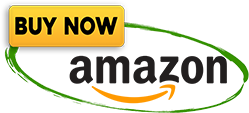How to be More Efficient at Work! – Improve Your Work Performance!
– Updated October 2, 2023

Welcome to Profit-Blast, your ultimate blog for passive income and earning Money from home. In this blog, we present you Great Life & Time Management Ideas to be more Efficient at Work and Improve Work Performance. Make More Money in Less Time! Let’s Dive in.
Introduction
Are you tired of feeling overwhelmed and unproductive at work? Do you find yourself constantly distracted by emails, social media, and other time-consuming tasks? If so, you’re not alone. Many people struggle with productivity and efficiency in the workplace. But fear not!
In this comprehensive guide, we will explore practical strategies and tips to help you become more efficient at work. From time management techniques to organization hacks, we’ve got you covered. So, let’s dive in and unlock your full potential!
Understanding the Importance of Efficiency
Efficiency is the key to achieving optimal productivity in the workplace. When you are efficient, you can accomplish more in less time, reduce stress, and improve the quality of your work.
Efficient individuals are able to prioritize tasks effectively, minimize distractions, and stay focused on the most important activities. By understanding the importance of efficiency, you can motivate yourself to make positive changes and strive for greater productivity.
Identifying Your Productivity Challenges
Before you can improve your efficiency, it is essential to identify the specific challenges that hinder your productivity. Take some time to reflect on your work habits and routines. Are you easily distracted by social media?
Do you struggle with time management? Are you overwhelmed by a cluttered workspace? By pinpointing your productivity challenges, you can develop targeted strategies to address them.
Mastering Time Management
Time management is a crucial skill for maximizing efficiency. By effectively managing your time, you can allocate resources to the most important tasks and avoid wasting valuable minutes on unproductive activities. Here are some strategies to help you master time management:

Prioritize Tasks
Create a to-do list and prioritize tasks based on their urgency and importance. Focus on completing high-priority tasks first and tackle less critical tasks later.
Break Tasks Into Smaller Steps
Large tasks can be overwhelming and lead to procrastination. Break them down into smaller, more manageable steps to maintain momentum and make progress.
Set Realistic Deadlines
Be realistic when setting deadlines for tasks. Avoid overcommitting yourself and allow for buffer time to handle unexpected delays or challenges.
Utilize Time Blocking
Time blocking involves scheduling specific periods for dedicated work on specific tasks. Block off uninterrupted time in your calendar to focus on critical activities.
Avoid Multitasking
Contrary to popular belief, multitasking can actually reduce efficiency. Instead, focus on one task at a time to maximize concentration and productivity.
Streamlining Your Workspace
A cluttered and disorganized workspace can hinder productivity and increase stress levels. By streamlining your workspace, you can create an environment that promotes focus and efficiency. Here are some tips to help you streamline your workspace:
Declutter Regularly
Get rid of unnecessary items and keep only the essentials on your desk. A clean and organized workspace can reduce distractions and improve concentration.
Create an Efficient Filing System
Establish a system for organizing documents and files. Use labels, folders, and digital tools to keep everything easily accessible and searchable.
Optimize Ergonomics
Ensure that your desk and chair are ergonomically designed to promote comfort and reduce strain. Proper ergonomics can enhance productivity and reduce the risk of fatigue or injury.
Minimize Visual Distractions
Remove unnecessary items or decorations that may distract your attention. Keep your workspace clean and visually appealing to create a conducive environment for focused work.
Close Unused Browser Tabs
If you’re working on your computer and you’re a browser hoarder like me, you’ll really want to clean up unnecessary browser tabs regularly for a much better overview.
You’ll want to do it every day after your work session (if not earlier), as this task alone can become overwhelming after a few days. A browser with potentially a few 100 tabs is like a room full of stuff – you just won’t find what you’re looking for.
Use Different Browsers
Another thing you can do is use different browsers for different Sites/Task. With a structure like this you’ll find everything much faster.
Optimizing Digital Tools and Apps
Digital tools and apps can be valuable assets for enhancing efficiency in the modern workplace. By utilizing the right tools, you can streamline workflows, automate repetitive tasks, and stay organized. Here are some digital tools and apps that can boost your productivity:
Task Management App
Use task management apps like Todoist or Trello to create and track your to-do lists, set reminders, and collaborate with colleagues.
Time Tracking Apps
Track and analyze how you spend your time using apps like RescueTime or Toggl. These tools provide insights into your productivity patterns and help you identify areas for improvement.
Email Management Tools
Manage your email efficiently with tools like Boomerang or SaneBox. These tools can help you schedule emails, prioritize messages, and reduce email overload.
Project Management Software
If you work on complex projects with multiple team members, consider using project management software like Asana or Basecamp. These tools facilitate collaboration, task allocation, and progress tracking.
Note-Taking Apps
Capture ideas, meeting notes, and important information using note-taking apps like Evernote or Microsoft OneNote. These apps allow you to access and organize your notes across different devices.

Prioritizing Tasks and Setting Goals
Effectively prioritizing tasks and setting goals is essential for maintaining focus and achieving long-term success. By clarifying your objectives and identifying key priorities, you can align your efforts with your overarching goals. Here are some strategies for prioritization and goal setting:
Use the Eisenhower Matrix
The Eisenhower Matrix helps you categorize tasks based on their urgency and importance. Focus on important and urgent tasks first, and delegate or eliminate tasks that are neither.
What is the Eisenhower Matrix?
The Eisenhower Matrix, also known as the Urgent-Important Matrix, is a simple time-management tool that helps you prioritize tasks based on their urgency and importance. It is named after Dwight D. Eisenhower, who popularized the concept. The matrix categorizes tasks into four quadrants:
Urgent and Important: These tasks require immediate attention and should be done personally.
Important but Not Urgent: These tasks are significant but can be scheduled for later. They should be done personally as well.
Urgent but Not Important: These tasks are time-sensitive but do not contribute to your long-term goals. Delegate them if possible.
Not Urgent and Not Important: These tasks are neither time-sensitive nor significant. Eliminate or minimize them.
Set SMART Goals
SMART goals are specific, measurable, achievable, relevant, and time-bound. By setting SMART goals, you provide clarity and direction for your work, increasing efficiency and motivation.
Break Down Goals Into Milestones
Large goals can be overwhelming. Break them down into smaller milestones to track progress and maintain momentum. Celebrate each milestone achieved to stay motivated.
Review and Adjust Goals Regularly
Regularly review your goals and adjust them as needed. Priorities may change, and new opportunities may arise. Flexibility and adaptability are key to staying efficient and aligned with your goals.
Managing Interruptions and Distractions
Interruptions and distractions can significantly hinder productivity. Learning to manage and minimize these disruptions is essential for maintaining focus and efficiency. Here are some strategies to help you manage interruptions and distractions:
Establish Clear Boundaries
Communicate your availability and boundaries to colleagues and team members. Set designated times for uninterrupted work and let others know when you are not to be disturbed.
Use Noise-Canceling Headphones
If you work in a noisy environment, invest in noise-canceling headphones to block out distractions and create a quiet work zone.
Implement Digital Detoxes
Periodically disconnect from digital devices and notifications to reduce distractions and improve focus. Designate specific times for checking emails and notifications rather than constantly being reactive.
Practice Mindfulness Techniques
Engage in mindfulness practices like meditation or deep breathing exercises to cultivate focus and reduce the impact of external distractions.

Promoting Healthy Work Habits
Maintaining a healthy work-life balance and prioritizing self-care are essential for long-term productivity and efficiency. Here are some healthy work habits to incorporate into your routine:
Take Regular Breaks
Schedule short breaks throughout the day to rest and recharge. Stepping away from your work can actually enhance focus and prevent burnout.
Practice Stress Management Techniques
Find healthy ways to manage stress, such as exercise, mindfulness, or engaging in hobbies. High stress levels can hinder productivity and well-being.
Get Sufficient Sleep
Prioritize quality sleep to support cognitive function, concentration, and overall well-being. Aim for 7-9 hours of sleep each night.
Maintain a Healthy Diet
Fuel your body with nutritious foods to sustain energy levels and promote mental clarity. Avoid excessive caffeine and sugar, as they can lead to energy crashes.
Stay Hydrated
Dehydration can negatively impact cognitive function. Keep a water bottle nearby and drink plenty of water throughout the day.
Get a CO2 Monitor- High CO2 Levels can Crush Concentration
When your room’s CO2 levels rise, oxygen levels decrease, leading to a decrease in cognitive function and focus.
This can result in reduced productivity, difficulty in retaining information, and impaired decision-making abilities.
Other symptoms of high CO2 levels include headaches, dizziness, fatigue, and increased heart rate. To address this issue, a CO2 monitor can be used to measure the CO2 levels in the room.
When the levels exceed a certain threshold, the monitor can remind you to open the window or take a break, allowing fresh air to circulate and restore optimal CO2 levels for better concentration and focus.
Collaborating Effectively with Others
Collaboration is often necessary in the workplace, and effective collaboration can significantly enhance efficiency and productivity. Here are some tips for collaborating effectively with others:
Clearly Communicate Expectations
When working with colleagues or team members, ensure that expectations are clearly communicated. Define roles, deadlines, and deliverables to avoid confusion or misunderstandings.
Use Collaboration Tools
Utilize collaboration tools like Google Drive, Microsoft Teams, or Slack to streamline communication, file sharing, and project management.
Foster a Positive Work Environment
Cultivate a supportive and inclusive work environment that encourages open communication, collaboration, and mutual respect. Positive work relationships can boost motivation and efficiency.

Delegate Tasks Appropriately
Recognize when tasks can be delegated to others. Delegating tasks frees up your time to focus on higher-priority activities and allows team members to develop their skills.
Continuous Improvement and Learning
Efficiency is not a one-time achievement; it requires continuous improvement and learning. Embrace a growth mindset and seek opportunities for personal and professional development. Here are some strategies for continuous improvement:
Seek Feedback
Regularly seek feedback from colleagues, supervisors, or mentors. Constructive feedback can help you identify areas for improvement and refine your skills.
Stay Updated
Stay informed about industry trends, technological advancements, and best practices relevant to your field. Continuous learning keeps you adaptable and ensures you remain competitive.
Reflect and Evaluate
Periodically reflect on your work habits, strategies, and outcomes. Evaluate what is working well and what could be improved. Adjust your approach based on these reflections.
Set Learning Goals
Identify specific skills or knowledge areas you want to develop. Set learning goals and create a plan to acquire new competencies through courses, workshops, or self-study.
Conclusion
Becoming more efficient at work is a journey that requires self-awareness, discipline, and continuous improvement. By implementing the strategies and tips outlined in this comprehensive guide, you can enhance your productivity, reduce stress, and achieve greater success in your professional endeavors.
Remember, efficiency is not about working harder, but rather working smarter. So, embrace the challenge, make small changes, and enjoy the rewards of a more efficient and fulfilling work life!
Now, it’s time to put these strategies into action and unlock your true potential. Happy and efficient working!
Disclaimer: The information provided in this article is for informational purposes only and should not be considered financial advice. Always consult with a professional advisor before making any investment decisions.
We are a participant in the Amazon Services LLC Associates Program, an affiliate advertising program designed to provide a means for us to earn fees by linking to Amazon.com and affiliated sites. Amazon and the Amazon logo are trademarks of Amazon.com, Inc. or its affiliates. This commission comes at no additional cost to you, and it helps support the blog, allowing us to continue providing valuable content. Rest assured, we only recommend products or services that we genuinely believe in and have personally tested or researched. Thank you for your support!



0 Comments